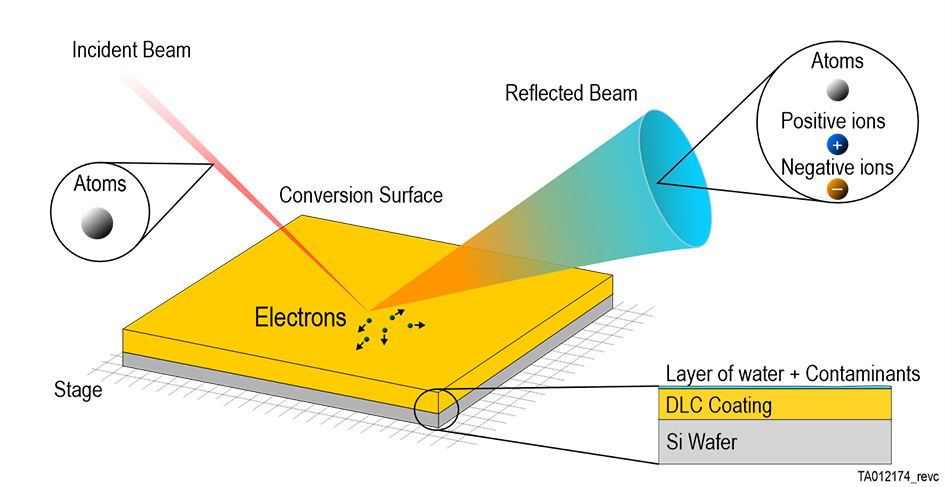Background
Conversion surfaces (CSs) have been used in numerous space instruments to detect low-energy (less than 1000 eV) atoms and ions in heliospheric and planetary environments (e.g., IBEX, Ulysses, IMAGE, JUICE, IMAP). Diamond-Like Carbon (DLC) is one of several materials used as a CS in space instruments. The CS changes the charge of the incident particles through the surface charge exchange processes. This property of CS enables the detection of space plasma of energy below 1000 eV. After conversion from an atom to an ion, the particle can be electrostatically analyzed for its energy and mass by the instrument’s subsystems. The CSs are characterized by their conversion efficiency which is a result of the ion yield (ability to convert atom to ion) and angular scattering of the converted particle. The latter is controlled by the surface roughness, the smoother the converting material, the narrower the reflected beam. However, it has been challenging to characterize the CSs for incident beams of energy below 500 eV, because that requires the beam to be stable and of high intensity.
Approach
We will measure the conversion efficiency of ultra-smooth and ultra-thin DLC CSs for ion beams with energies below 1000 eV using the Energetic Particle Ion Calibration (EPIC) facility. The EPIC facility provides stable neutral and ion beams of major gas species in an energy range necessary to characterize the CSs, especially in the range below 500 eV. We develop a system to fully characterize the conversion efficiency of the CSs of various types. The system includes a secondary electron deflection system, retarding potential analyzer, and position-sensitive imager, which will enable measurement of the ion yield and angular scattering distribution of the reflected beam. We will test the system for hydrogen and helium incident beams at various energies in a range from 50 to 1000 eV. With that, we will be able to study the conversion efficiency of DLC CS for low energy of the incident particles, similar to those present in the interplanetary and interstellar plasmas.

Figure 1: Sketch of the scenario – not to scale: an incident beam of neutral atoms (or positively charged ions) hits the conversion surface (a layer of DLC film on top of a silicon wafer with a layer of contaminants on top) releasing secondary electrons and reflects as a beam consisting of sputtered and scattered products composed of atoms and negatively and positively charged ions. Measurements of the properties of the reflected beam allow to determine the conversion efficiency of the conversion surface.
Accomplishments
The project has been initiated recently. Currently, the system is in the assembly, integration and testing phase.

